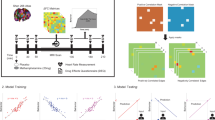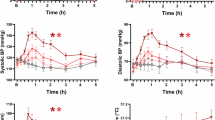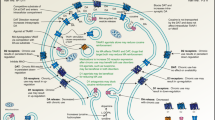Abstract
Intranasal methamphetamine abuse has increased dramatically in the past decade, yet only one published study has investigated its acute effects under controlled laboratory conditions. Thus, the current study examined the effects of single-dose intranasal methamphetamine administration on a broad range of behavioral and physiological measures. Eleven nontreatment-seeking methamphetamine abusers (two females, nine males) completed this four-session, in-patient, within-participant, double-blind study. During each session, one of four intranasal methamphetamine doses (0, 12, 25, and 50 mg/70 kg) was administered and methamphetamine plasma concentrations, cardiovascular, subjective, and psychomotor/cognitive performance effects were assessed before drug administration and repeatedly thereafter. Following drug administration, methamphetamine plasma concentrations systematically increased for 4 h postdrug administration then declined. Methamphetamine dose dependently increased cardiovascular measures and ‘positive’ subjective effects, with peaks occurring approximately 5–15 min after drug administration, when plasma levels were still ascending. In addition, cognitive performance on less complicated tasks was improved by all active methamphetamine doses, whereas performance on more complicated tasks was improved only by the intermediate doses (12 and 25 mg). These results show that intranasal methamphetamine produced predictable effects on multiple behavioral and physiological measures before peak plasma levels were observed. Of interest is the dissociation between methamphetamine plasma concentrations with cardiovascular measures and positive subjective effects, which might have important implications for potential toxicity after repeated doses.
Similar content being viewed by others
Log in or create a free account to read this content
Gain free access to this article, as well as selected content from this journal and more on nature.com
or
References
Angrist B (1994). Amphetamine psychosis: clinical variations of the syndrome. In: Cho AK, Segal DS (eds). Amphetamine and its Analogues. Academic Press: San Diego. pp 387–414.
Cho AK, Melega WP, Kuczenski R, Segal DS (2001). Relevance of pharmacokinetic parameters in animal models of methamphetamine abuse. Synapse 39: 161–166.
Comer SD, Collins ED, Fischman MW (1997). Choice between money and intranasal heroin in morphine-maintained humans. Behav Pharmacol 6: 677–690.
Comer SD, Haney M, Foltin RW, Fischman MW (1996). Amphetamine self-administration by humans: modulation by contingencies associated with task performance. Psychopharmacology 127: 39–46.
Comer SD, Hart CL, Ward AS, Haney M, Foltin RW, Fischman MW (2001). Effects of repeated oral methamphetamine administration in humans. Psychopharmacology 155: 397–404.
Community Epidemiology Work Group (CEWG) (2005). Epidemiologic Trends in Drug Abuse Volume I: Proceedings of the Community Epidemiology Work Group, NIH Pub. No. 05-5364A US Government Printing Office: Washington, DC.
Community Epidemiology Work Group (CEWG) (2007). Epidemiologic Trends in Drug Abuse Volume I: Proceedings of the Community Epidemiology Work Group, NIH Pub. No. 07-5879A US Government Printing Office: Washington, DC.
Cook CE, Jeffcoat AR, Hill JM, Pugh DE, Patetta PK, Sadler BM et al (1993). Pharmacokinetics of methamphetamine self-administered to human subjects by smoking S-(+)-methamphetamine hydrochloride. Drug Metab Dispos 21: 717–723.
Domier CP, Simon SL, Rawson RA, Huber A, Ling W (2000). A comparison of injecting and noninjecting methamphetamine users. J Psych Drug 32: 229–232.
Foltin RW, Fischman MW, Pedroso JJ, Pearlson GD (1988). Repeated intranasal cocaine administration: lack of tolerance to pressor effects. Drug Alcohol Depend 22: 169–177.
Foltin RW, Haney M (2004). Intranasal cocaine in humans: acute tolerance, cardiovascular and subjective effects. Pharmacol Biochem Behav 78: 93–101.
Gawin FH, Khalsa-Denison ME (1996). Is craving mood-driven or self-propelled? Sensitization and ‘street’ stimulant addiction? NIDA Res Monogr 163: 224–250.
Halkitis PN, Parsons JT, Wilton L (2003). An exploratory study of contextual and situational factors related to methamphetamine use among gay and bisexual men in New York City. J Drug Issues 33: 413–432.
Harris DS, Boxenbaum H, Everhart ET, Sequeira G, Mendelson JE, Jones RT (2003). The bioavailability of intranasal and smoked methamphetamine. Clin Pharmacol Ther 74: 475–486.
Hart CL, Haney M, Foltin RW, Fischman MW (2002). Effects of the NMDA antagonist memantine on human methamphetamine discrimination. Psychopharmacology 164: 376–384.
Hart CL, Haney M, Nasser J, Foltin RW (2005). Combined effects of methamphetamine and zolpidem on behavior of shift workers. Pharmacol Biochem Behav 81: 559–568.
Hart CL, Haney M, Vosburg SK, Comer SD, Gunderson EW, Foltin RW (2006). Modafinil attenuates disruptions in cognitive performance during simulated night shift work. Neuropsychopharmacology 31: 1526–1536.
Hart CL, van Gorp WG, Haney M, Foltin RW, Fischman MW (2001b). Effects of acute smoked marijuana on complex cognitive performance. Neuropsychopharmacology 25: 757–765.
Hart CL, Ward AS, Haney M, Foltin RW, Fischman MW (2001a). Methamphetamine self-administration by humans. Psychopharmacology 157: 75–81.
Hart CL, Ward AS, Haney M, Nasser J, Foltin RW (2003). Methamphetamine attenuates disruptions in performance and mood during simulated night shift work. Psychopharmacology 169: 42–51.
Hatsukami DK, Fischman MW (1996). Crack cocaine and cocaine hydrochloride. Are the differences myth or reality? JAMA 276: 1580–1588.
Johnson BA, Ait-Daoud N, Wells LT (2000). Effects of isradipine, a dihydropyridine-class calcium channel antagonist, on D-methamphetamine-induced cognitive and physiological changes in humans. Neuropsychopharmacology 22: 504–512.
Johnson BA, Roache JD, Ait-Daoud N, Wallace C, Wells L, Dawes M et al (2005a). Effects of isradipine, a dihydropyridine-class calcium-channel antagonist, on d-methamphetamine's subjective and reinforcing effects. Int J Neuropsychopharmacol 8: 203–213.
Johnson BA, Roache JD, Ait-Daoud N, Wallace C, Wells LT, Wang Y (2005b). Effects of isradipine on methamphetamine-induced changes in attentional and perceptual-motor skills of cognition. Psychopharmacology 178: 296–302.
Johnson BA, Roache JD, Bordnick PS, Ait-Daoud N (1999). Isradipine, a dihydropyridine-class calcium channel antagonist, attenuates some of d-methamphetamine's positive subjective effects: a preliminary study. Psychopharmacology 144: 295–300.
Jones HE, Garrett BE, Griffiths RR (2001). Reinforcing effects of oral cocaine: contextual determinants. Psychopharmacology 154: 143–152.
Kelly TH, Foltin RW, Emurian CS, Fischman MW (1993). Performance-based testing for drugs of abuse: dose and time profiles of marijuana, amphetamine, alcohol, and diazepam. J Anal Toxicol 17: 264–272.
McLeod DR, Griffiths RR, Bigelow GE, Yingling J (1982). An automated version of the digit symbol substitution test (DSST). Behav Res Methods Instrum 14: 463–466.
Mendelson J, Jones RT, Upton R, Jacob P (1995). Methamphetamine and ethanol interactions in humans. Clin Pharmacol Ther 57: 559–568.
Miller TP, Taylor JL, Tinklenberg JR (1988). A comparison of assessment techniques measuring the effects of methylphenidate, secobarbital, diazepam, and diphenhydramine in abstinent alcoholics. Neuropsychobiology 19: 90–96.
Newton TF, De La Garza II R, Fong T, Chiang N, Holmes TH, Bloch DA et al (2005). A comprehensive assessment of the safety of intravenous methamphetamine administration during treatment with selegiline. Pharmacol Biochem Behav 82: 704–711.
Newton TF, Roache JD, De La Garza II R, Fong T, Wallace CL, Li SH et al (2006). Bupropion reduces methamphetamine-induced subjective effects and cue-induced craving. Neuropsychopharmacology 31: 1537–1544.
Silber BY, Croft RJ, Papafotiou K, Stough C (2006). The acute effects of d-amphetamine and methamphetamine on attention and psychomotor performance. Psychopharmacology 187: 154–169.
Silverman K, Kirby KC, Griffiths RR (1994a). Modulation of drug reinforcement by behavioral requirements following drug ingestion. Psychopharmacology 114: 243–247.
Silverman K, Mumford GK, Griffiths RR (1994b). Enhancing caffeine reinforcement by behavioral requirements following drug ingestion. Psychopharmacology 114: 424–432.
Stoops WW, Lile JA, Fillmore MT, Glaser PEA, Rush CR (2005a). Reinforcing effects of methylphenidate: influence of dose and behavioral demands following drug administration. Psychopharmacology 177: 349–355.
Stoops WW, Lile JA, Fillmore MT, Glaser PEA, Rush CR (2005b). Reinforcing effects of modafinil: influence of dose and behavioral demands following drug administration. Psychopharmacology 182: 186–193.
Wesnes K, Warburton DM (1983). Effects of smoking on rapid information processing performance. Neuropsychobiology 9: 223–229.
Wiegmann DA, Stanny RR, McKay DL, Neri DF, McCardie AH (1996). Methamphetamine effects on cognitive processing during extended wakefulness. Int J Aviat Psychol 6: 379–397.
Acknowledgements
The medical assistance of Dr Benjamin R Nordstrom and technical assistance of Gydmer Perez are gratefully acknowledged. This research was supported by a grant from the National Institute on Drug Abuse (DA19559).
Author information
Authors and Affiliations
Corresponding author
Additional information
DISCLOSURE/CONFLICTS OF INTEREST
The authors declare that except for the income received from our primary employer no financial support or compensation has been received from any individual or corporate entity over the past 3 years for research or professional service and there are no personal financial holdings that could be perceived as constituting a potential conflict of interest.
Rights and permissions
About this article
Cite this article
Hart, C., Gunderson, E., Perez, A. et al. Acute Physiological and Behavioral Effects of Intranasal Methamphetamine in Humans. Neuropsychopharmacol 33, 1847–1855 (2008). https://doi.org/10.1038/sj.npp.1301578
Received:
Revised:
Accepted:
Published:
Issue date:
DOI: https://doi.org/10.1038/sj.npp.1301578
Keywords
This article is cited by
-
Methamphetamine use increases the risk of cerebral small vessel disease in young patients with acute ischemic stroke
Scientific Reports (2023)
-
Cardiovascular disease associated with methamphetamine use: a review
Heart Failure Reviews (2022)
-
A Comprehensive Approach to Managing Methamphetamine-Associated Cardiomyopathy
American Journal of Cardiovascular Drugs (2022)
-
Clinical characteristics and outcomes of methamphetamine-associated versus non-methamphetamine intracerebral hemorrhage
Scientific Reports (2020)
-
Wild at heart: 34-year-old male with new onset dyspnea, heart failure and history of amphetamine use; a case report
The Egyptian Heart Journal (2019)



